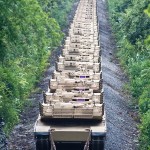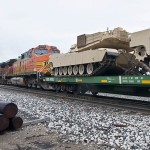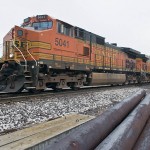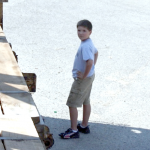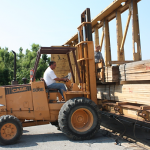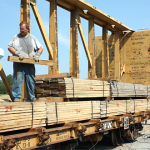Caught a southbound manifest at Mortons Gap and a dogs breakfast lash-up at Atkinson Yard. No shots of the two trains that passed the depot during the meeting. (photos by Chuck Hinrichs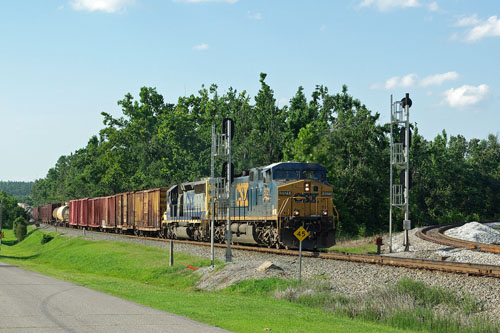
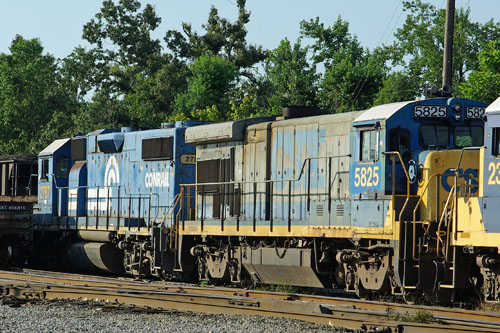
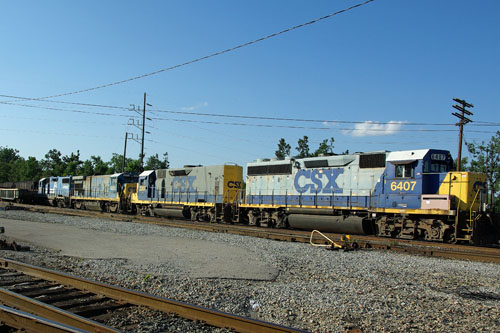
Month: July 2009
A train headed up by BNSF engine 5041 headed North through Madisonville’s West Yards and on Tuesday afternoon July 28, 2009 with 28 flat cars, each with two tanks. Car Trace on the P&L website lists the train as LCL328 leaving Paducah at 13:20 on the same date, but not much else. At West Yards it took a siding in order to pass the LGE Coal Drag that was waiting to depart also to the North. The overhead location was at the overpass on Grapevine Road in Madisonville looking North as the train heads away from Madisonville. (Photos by Jim Pearson)
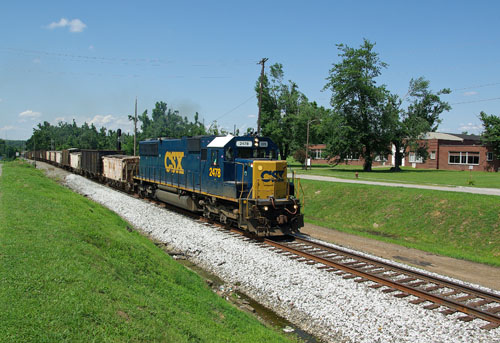
2478 is not an SD40-2 it is an SD50-2. This unit and many others are ex Conrial SD50s that have been derated to 3000 hp and re-numbered in the 2400 series. Chuck Hinrichs

FOR THE GOVERNMENT OF RAILFANS ONLY
- SummeRail at C.U.T. – Saturday, August 8, 2009 1:00 pm to 10:00 pm and Railroad Show and Sale in the Rotunda – 10:00 am to 5:00 pm Cincinnati Union Terminal, 1301 Western Avenue Cincinnati, Ohio. http://cincinnatirrclub.org/summerail.htm.
- Crofton Picnic and Train Watching – West Kentucky Chapter of the NRHS – Saturday, October 3.
50-year-old train ride from Jasper to French Lick
Updated: Apr 07, 2008 1:34 PM CDT
Reporter: Jared Austin, Web Producer: Mike Mardis
It’s been over 50 years since passengers have ridden the train from Jasper to French Lick. This year you may be able to buy a ticket to make that trip.
The city of Jasper is putting the finishing touches on the first of three new train cars. “It will be a fully functional car you get on board you will think you are almost home,” Raymie Eckerle, JAsper Street Commissioner, said.
The train car is lined with quarter saw oak, historic light fixtures, and an old style tin ceiling.
“One of the cleanest economic boost we can have for our community is tourism,” Jasper Mayor William Schmitt said, “it is a good clean industry and in order to get people into your community you have got to have something to offer them.”
The train ride from the Jasper depot to the French Lick casinos will take just over an hour. That’s twice as long as in a car. So why would passengers choose a train ride instead.
“So many people say ‘I have never really ridden on a train,’ and this will give them the opportunity to take a scenic train ride from Jasper, Indiana to French Lick where you will travel through the longest tunnel in the state of Indiana,” Schmitt said.
“I have driven to French Lick many times myself in cars,” Eckerle said, “and this is going to be one the fantastic opportunities for people to see the country side in a nice easy setting.”
The rail line is complete from Huntingburg to Jasper, but still needs repairs. City officials hope to have all three cars and the tracks ready before the end of the year. – submitted by Steve Miller
By Steve Barry, Railfan & Railroad
The hobby industry lost a true giant yesterday with the passing of Hal Carstens. Hal joined the staff of Railroad Model Craftsman in 1952, became editor in 1954 and president of the company in 1962.
Hal served as president of various organizations, including Hobbies Industries of America, the Model Railroad Industry Association, Friends of the New Jersey Railroad & Transportation Museum and the Train Collectors Association. He also served in various capacities with the Photographic Society of America, Hobby Industry Association and the Wagner College Board of Trustees.
It was his leadership of Carstens Publications where he will be missed the most. The business has always been more of a family, and Hal was our patriarch. I wouldn’t be able to thank him enough for the opportunities he has given me in the publishing business.
To say we’re going to miss Hal is obvious. But while we’ll miss him as our leader and boss, and miss him as one of the hobby industry’s premier promoters, we’ll miss him most as a friend. -submitted by Chuck Hinrichs
This KCS unit leads CSX Q514 through Princeton and St. James, IN, June 29, 2009. Lee Gordon shot these photos which were then submitted by Bill Grady, Louisville. Nice teamwork guys.
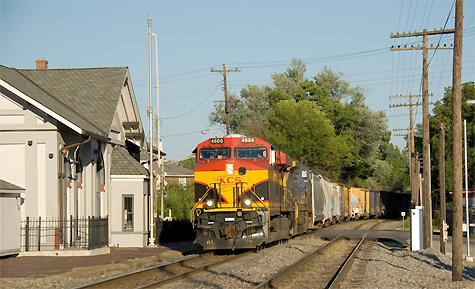
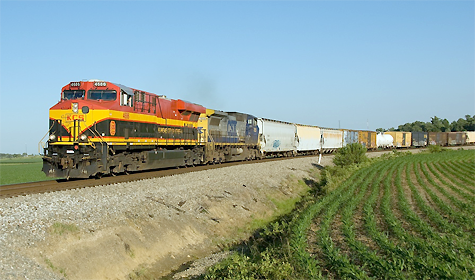
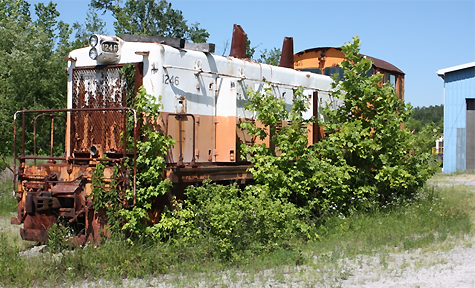
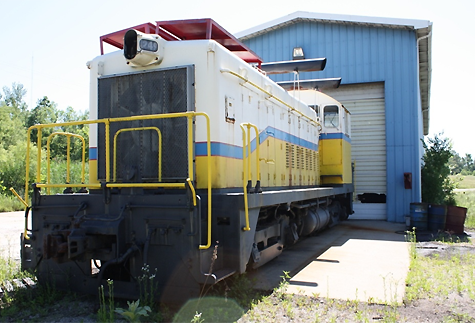
Submitted by Dennis Carnal
This is the first in a series of articles and photographs linking coal mining and the L&N Railroad during the 1930s till the 1970s. We will start with an article covering the first coal mine in Hopkins County to produce over two million tones of coal in one year. This production was done by the somewhat new use of surface or strip mining. Strip mining was a much cheaper way to mine coal during this time period, than underground mining.
The mine covered by this article was the Homestead Coal Company, opened during 1946. The coal reserves in this area were owned by The West Kentucky Coal Company. The area covered by this mine was bordered by Highway 41 between Earlington and Nortonville on the east. By Highways 112 and 454 between Earlington and St. Charles on the north and west. By Highway 62 between Nortonville and St. Charles on the south. The area north of St. Charles had been mined by the Fox Run Mine during the early 1900s.
The coal was mined by two electric power shovels. One shovel built by the Bucyrus-Erie Company had a 35 cubic yard bucket. The other shovel was built by the Marion machinery company and had a 20 cubic yard bucket.
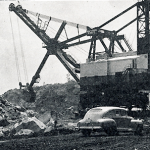
In June 1955, Peabody Coal Company purchased Homestead Coal Company. In 1955, employment and production peaked. During 1955, 240 miners produced 2,307,557 tons of coal. Employment and production totals dropped until 1959, when the mine closed and all remaining equipment was moved to the newer White City mine, east of Mortons Gap.
Now, please read excerpts from a story covering the Homestead Mine from the September 1948 issue of the L&N Magazine. Next month look for a story from the October 1956 issue of the L&N Magazine about a 1,200 ton monster movement over the L&N Henderson Subdivision between Mortons Gap and Nortonville.
Homestead mine is one of the newest and largest coal mines served by the Old Reliable. It is not the only strip, or open-pit mine on our lines, although these are comparatively few, but it is certainly the most impressive. It is located in Hopkins County, down in Western Kentucky near Nortonville, and is served by our Homestead Branch, which was completed in the later part of 1946. This 4.74-mile long spur is an offshoot of the Evansville-Nashville line and about one-third of it was built jointly with the Illinois Central, which thus also services the development.
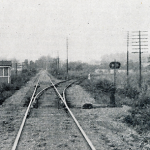
Homestead Mine was placed in operation shortly after the completion of the Branch and ever since has been funneling a cascade of high-grade bituminous coal into our waiting cars. (It has a rating of 9,000 tons, or 180 cars per day.)
The seams being mined at Homestead are the No. 11 and No. 12 ones, the No. 9 seam, further on down in the bosom of the earth, generally having already been mined by underground methods throughout the area. Atop the No. 12 is some 50 to 80 feet of overburden. The No. 12 seam, which averages around four and one-half feet thick, is separated from the No. 11 seam, which runs around six and one-half feet thick, by about seven to eight feet of limestone rock. Hence, before the seams can be mined, some changes obviously have to be made.
An essential ingredient in the strip mining of coal at Homestead is “Buster,” a “million-dollar baby’” produced by the Bucyrus-Erie people, who have long specialized in the manufacture of custom-built, heavy-duty excavating machinery. “Buster” – an appellation originating with the writer, is a giant, electrically-operated shovel, towering some 100 feet above the ground and weighing some 1,600 tons. It removes the overburden in huge, 35-cubic yard bites, piling the rock and earth expertly to one side in small-sized Alps, and inching its way forward between munches at the rate of about one-tenth of a mile an hour. (Incidentally, it took 46 freight cars to transport the component parts of this colossus to Homestead for assembly.)
The giant shovel is followed by bulldozers which remove the miscellaneous debris which escape the former’s maw. Then a smaller edition of “Buster,” but Diesel-powered, moves in to mine the coal, scooping it up and dumping it 15 to 20 tons at a time into the waiting trucks, some of which have a capacity as great as 40 tons.
The trucks roar away to a dumping apron atop the head end of a conveyor belt—the reception room of a “beauty shop” some 600 feet distant. The belt, which is trestled across the valley in an enclosed structure, trundles the coal along at a fast rate of speed to the cleaning and preparation plant, whose attractive buildings resemble some huge, modernistic hotel. Here an inky Niagara of coal, seemingly sufficient to feed the furnaces of all the nation’s homes and industries, dumps continuously on a jiggling apron of steel, punched with holes of varying sizes, like a bagatelle board. This separates the coal into three sizes prior to washing, and watchful eyes and expert hands remove debris such as sticks, rock, and the like, which are surprisingly rare at that.
Generally speaking, coal is lighter than its accompanying impurities. Hence, a system of “floating” the coal and “sinking” the impurities is effectively used at Homestead to separate the coal from its dross. This is done by passing the coal through rushing streams of chemically-treated water, the chemicals, i.e.., calcium chloride, zinc chloride, and the like, hastening the separation process.
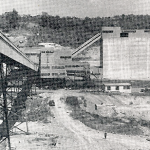
The refuse coal, etc., is conveyed back across the valley for dumping by another conveyor belt. The raw coal loses from 15 to 18 percent of its weight in the washing and cleaning process.
After the coal has parted company with its “fellow travelers” the moisture is removed by an automatic de-watering and drying system and the coal is then further screened into various sizes—lump, egg, nut, and slack – for special uses—industrial, domestic, steam plant, stoker, and so on.
Not over 30 minutes have elapsed since it was first scooped from the ground. Some of it is placed in storage but most is promptly conveyed by gravity into the waiting coal cars of the Old Reliable—or of the Illinois Central. (at present writing we are hauling about 2/3s of the tonnage.) Here again gravity supplies the motive power, delivering the cars onto one of the tracks of a six-track storage yard with a capacity of 150 cars. Mine runs then haul the hoppers into the make-up yard at Earlington, KY, and the long, solid coal trains are soon rumbling their way north, east, south and west.
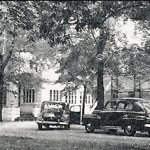
On August 18 (1948), it (West Kentucky Coal) moved its general offices from Earlington into a modern, spacious and air-conditioned three-story structure at Madisonville (present day Multicare facility). Here 75 employees will continue to guide and direct the destinies of a business whose output in 1947 was topped by only 18 other coal producers in the entire country.
Members of the West Kentucky Chapter of the NRHS wish to express their condolences, prayers, and other thoughts to chapter member and friends, Gary Miller and his wife Cindy, on the death of their son Scott Allan Miller. Scott passed away unexpectedly June 22, 2009, in Puyallup, WA. He was born July 7, 1978 in Arlington Heights, Ill. Internment will be at Calvary Cemetery, Seattle.
Last month we had an excellent program on the Santa Fe by Wallace Henderson and good refreshments were provided by David Millen. The discussions during the meeting were, also, very interesting. It was a great summer night on the platform as well.
On a different topic, Chuck Hinrichs resigned his position as Vice-President last month in part because he felt that he has not been able to motivate the membership into going on trips or partaking in projects and he also wants to take things a bit easier in his retirement. I want to sincerely thank Chuck for his long time service to the Chapter in various positions such as doing the newsletter for many years, as National Director, as Vice-President, and as our Historian. He has continually supported the Chapter and will continue to do so as the Historian and provider of articles and photos to the newsletter and website. We should all take the opportunity to thank Chuck for his continued service. He is a very knowledgeable fan of railroading and very interested in rail history and the future of our Chapter.
I would like to take a moment to ask you, the members, to consider volunteering to fill out the remainder of Chuck’s term as Vice-President and to give full and thoughtful consideration to allowing your name to be put in the hat for a full term when we have the yearly elections this fall. The job would entail filling in for me in the remote chance that I will not be able to make a particular meeting. I have tried very hard to be at every meeting and scheduling our “Granddaughter trips” around these dates. I did have to miss a meeting in 2007 because of the passing of my Mom but that was unavoidable.
The other function of the Vice President is to try and organize Chapter activities and projects. Examples of past trips have been to the Kentucky Railroad Museum, the rail trip last fall in Tennessee, our rail trip to Chattanooga, our trip to the VMV engine shops in Paducah, the trip to see the yard operations in Paducah, and the yearly picnic in Crofton alongside the CSX tracks. There are other things that we could do and your input and suggestions are welcome. If anyone would like to discuss the possibility of filling out Chuck’s term and of running for the position please feel free to call or contact me anytime. My phone number is 270-825-3429 and my email is rkhane@newwavecomm.net. Thanks for considering this position.
I hope to see all of your smiling faces at our next meeting at 7pm on Monday, July 25, at the Center in beautiful downtown Madisonville.
Rich Hane, President West Ky Chapter NRHS
Pennsylvania RR – Video Transition from Steam to Diesel
Program by Tim Moore
Beginning in the summer of 1952, Emery Gulash began capturing prolific amounts of activity on this well known railroad. Back in 1952 Emery did not realize that in a few years the railroad would merge with the New York Central and be called the Penn Central. This DVD covers the time frame from 1952 to 1969. Follow Emery and his 16mm Bolex cameras as he records in beautiful color the end of steam and the transition to first generation diesels. You’ll see Decapods, Baldwin Centipedes, and Sharks, ‘F’ units, early Geeps, GG-1’s, Alco RS-3’s, just to name a few.
Join us at 7:00 pm at The Center, the former L&N Depot Near Arch and Main Streets in Madisonville, Kentucky.

